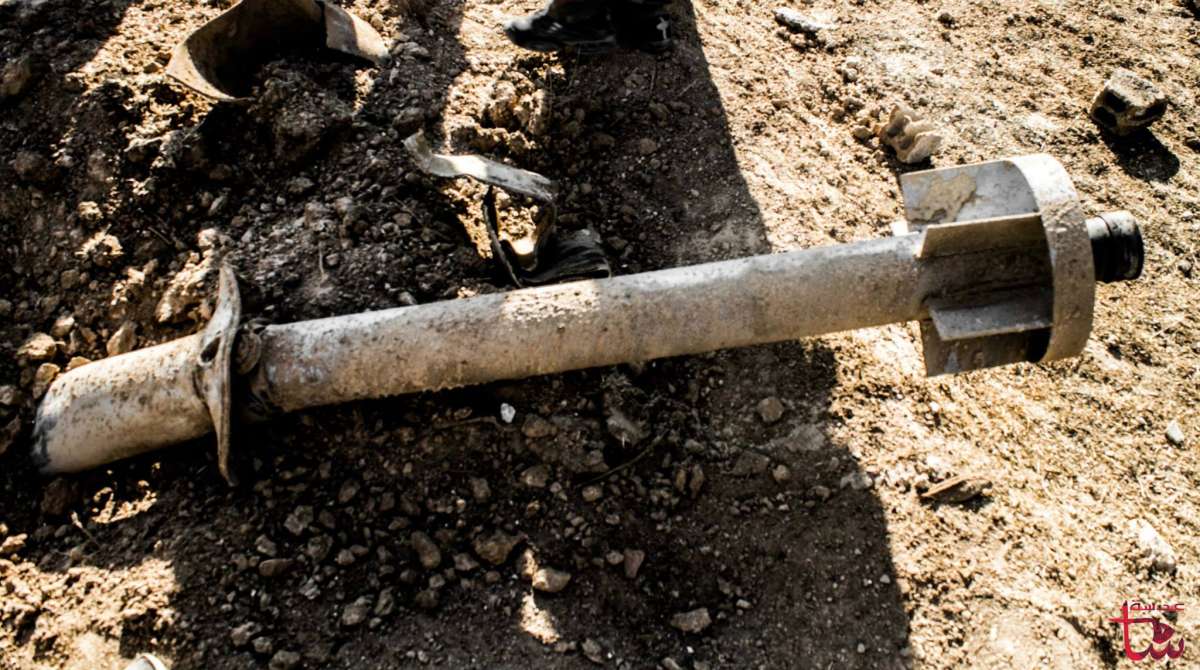Locating the Rockets Used During the August 21st Sarin Attacks in Damascus
Following the August 21st 2013 Sarin attacks in Damascus a number of images were posted online showing the remains of the rockets used in the attack, along with claims of where they had landed. For example, in this video we have a press conference with Zamalka local council where they show what they claim to be impact sites of the rockets
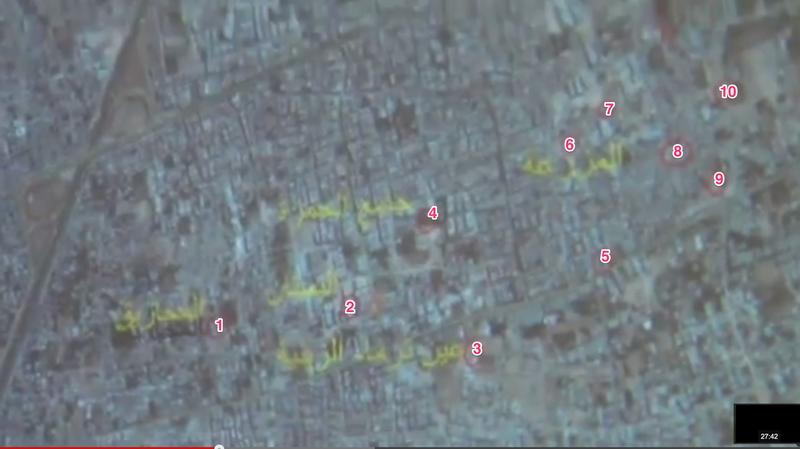
For those of us working to confirm as much information about the August 21st attacks it was possible to use this information to find the exact impact locations of several rockets. The process for identifying the impact locations for each rocket provides great examples of the variety of tools and techniques that an investigator can use when attempt to find specific locations with open source information.
Rocket 1
A number of videos and photographs were posted of one rocket in particular, marked with “197”, an example of which can be seen below
It was clear the rocket was in a field next to some apartment buildings, with no roads visible, and we had a rough idea where the rockets had landed (at least according to the local co-ordination committee). A number of people started searching satellite map imagery for potential locations, and it appeared there were very few locations in the area that could have been a possible match. It can be extremely useful to have multiple people searching for the same location to quickly identify possible areas to examine. Often, once I’ve established a general area for a search, I’ll simply asking my followers on Twitter if they can find any potential spots, and generally I’ll receive several suggestions which can each be quickly investigated.
The best match that was found in this instance was a field next to some apartment buildings near the reported impact sites
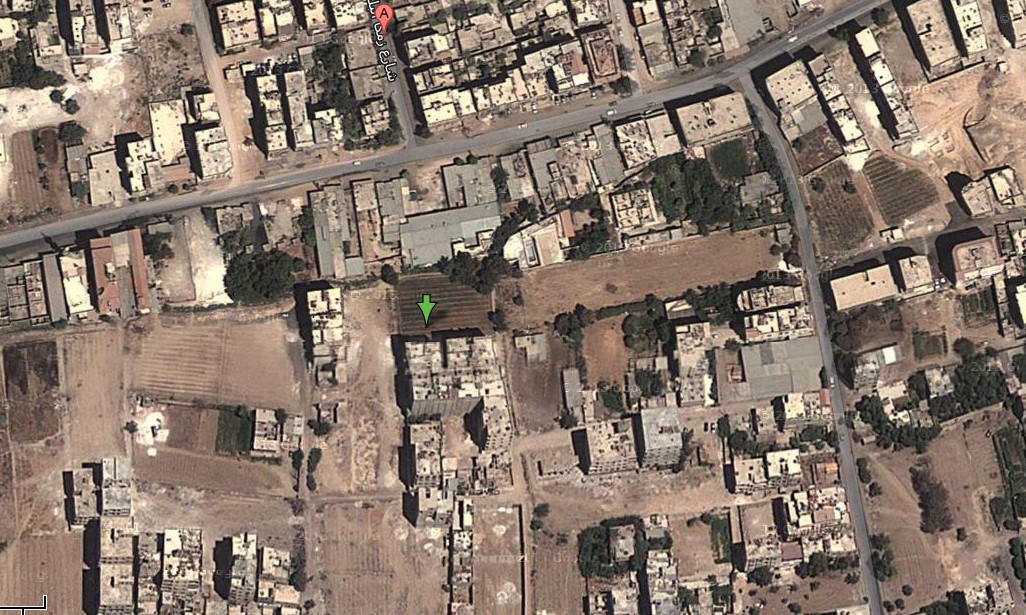
It was then a case of examining the images we had to see if it was a good fit. For example, the below picture helped establish the position of the rocket in relation to the apartment building, which we could then use to establish the direction other images were taken


In the above satellite image I drew what I believed the line of sight was behind the building, and although only a small area was visible it did confirm there was nothing to the side of the building. It’s important to remember you’re not only looking for what should be there, but also what shouldn’t be there.
This next image was an awkward angle, but it did give a clear view of buildings that were to the north, behind the building closest to the rocket.
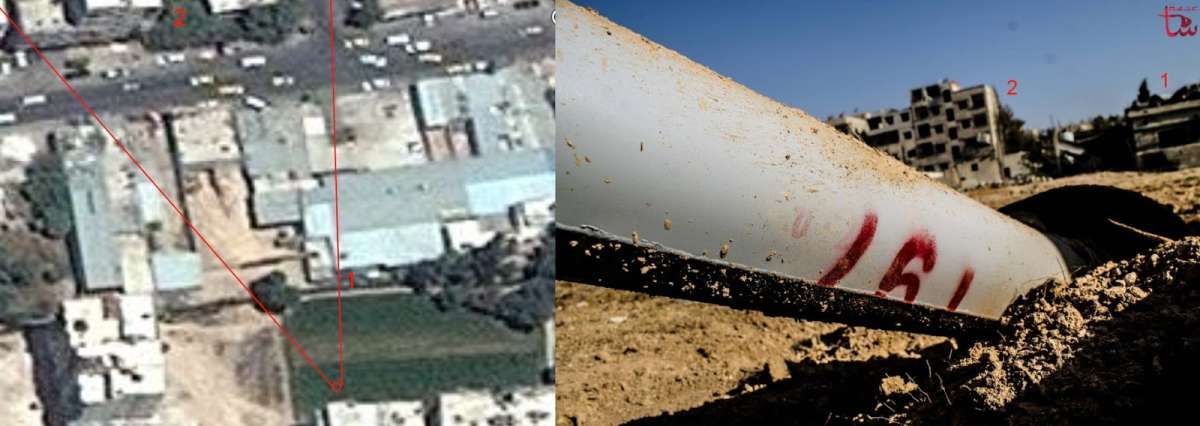
Here it was possible to count the windows on the building at point 2 on both the satellite map and in the image, and the void to the right of the building was also a match in both the satellite map and image. It was even possible to see the tops of some trees in the photograph that were visible in the satellite map.
This image shows the view to the north, but slightly to the right of the above image.

Here it’s possible to count the windows at point 2, and even make out the balcony on the corner of the building on the satellite map imagery. Further images to the east and west also show features that match, which allows us to confirm the position this rocket was recorded at. Based on the position of the rocket it appears the rocket would have likely come from the north.
Rocket 2
In this example we had one crucial piece of information, GPS data, that was sent to us by the person who filmed the following footage, originally broadcast by ITN
The above video is made up from several clips filmed in different locations, and in this example we’re looking at one impact location, shown in the below clip
In the above clip we have views of the location in opposite directions. The GPS information provided was not entirely accurate, and it’s always worth keeping in mind GPS information provided in these circumstances might not always be 100% reliable for a number of reasons. The GPS co-ordinated pointed to the area below

It wasn’t immediately obvious if a wall was present in this image, but using Google Earth historical imagery it was possible to find an earlier image where shadows were being cast by the structures in the area (more details on using Google Earth historical imagery here)

Here it’s possible to make out the shadow cast by the wall, as well as the shadows of the surrounding buildings. The longer the shadows, the taller the structure, so we can see here the buildings surrounding the wall are much taller, something that’s visible in the videos.
It also appears that in the above images the building to the left of the wall is jutting out into the road. In fact, in the video we can just make out that the upper floor juts out over the lower floor

We can also see the buildings to the south of that building, across the road, are not parallel with the road, something visible on satellite map imagery


The view east is also visible in the video
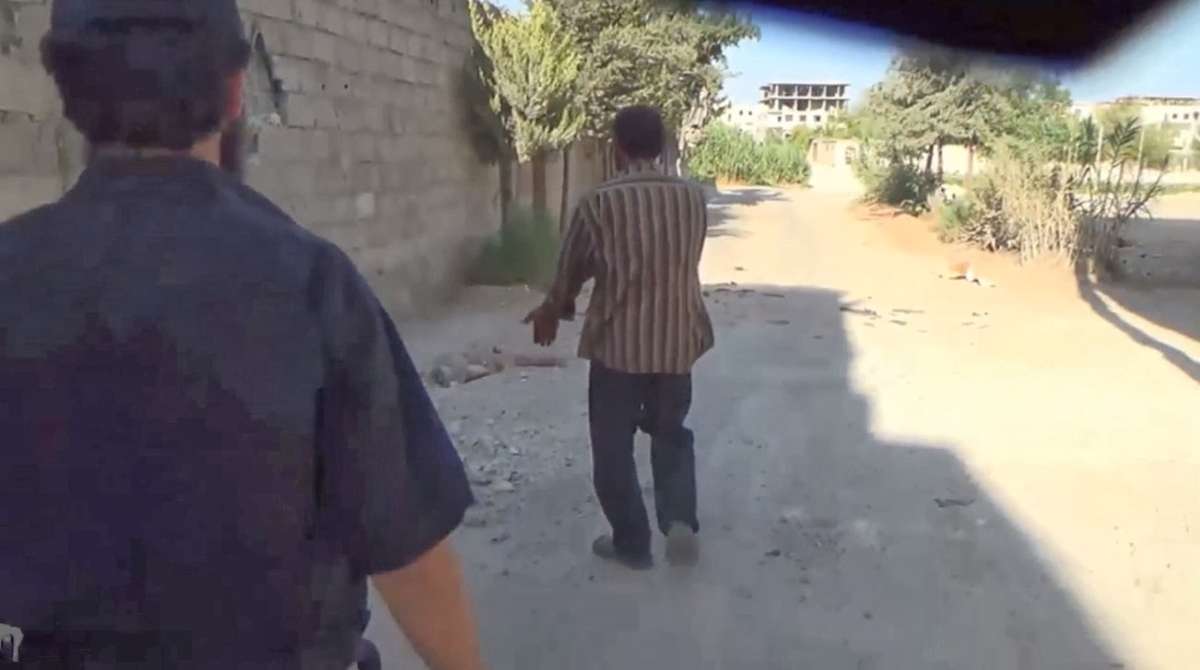
The below image shows the approximate field of view visible in the video, with a large building visible to the east

Using historical imagery it’s possible to find an image that shows the west side of the building, allowing up to count the number of windows and their position on the building in both the video and the satellite map imagery

It’s also interesting to note the rocket appears to have passed through a wall just before impact, suggesting it would have come from the northwest, although there’s a possibility it hit the building to the west of the wall before its final impact, so it would be difficult to be sure exactly where it came from. This rocket is located around 600m north-east of Rocket 1
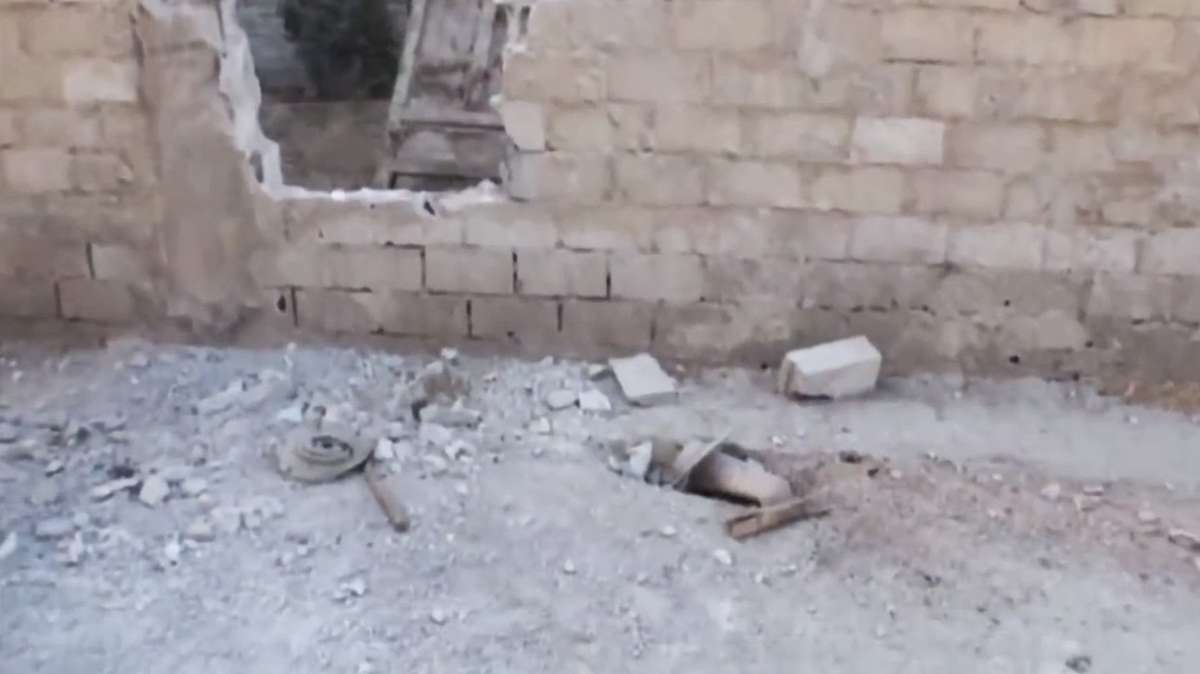
Rocket 3
This rocket was more of a challenge as its final resting place wasn’t outside where we could expect to see lots of useful landmarks, but inside an apartment building
The key with this rocket was establishing the location of the building the video was filmed in. It was first filmed when UN/OPCW inspectors visited the attack sites in Damascus, and by establishing which videos featured the same inspectors it was possible to find the location of the building. There was a lot of footage of the inspectors at work, so we examined the footage filmed showing the inspectors examining the rocket, and compared it to footage filmed outside buildings on the same day. Only one group of videos filmed outside buildings matched, and we were able to make out the following three individuals present both at the inspection site and outside one building
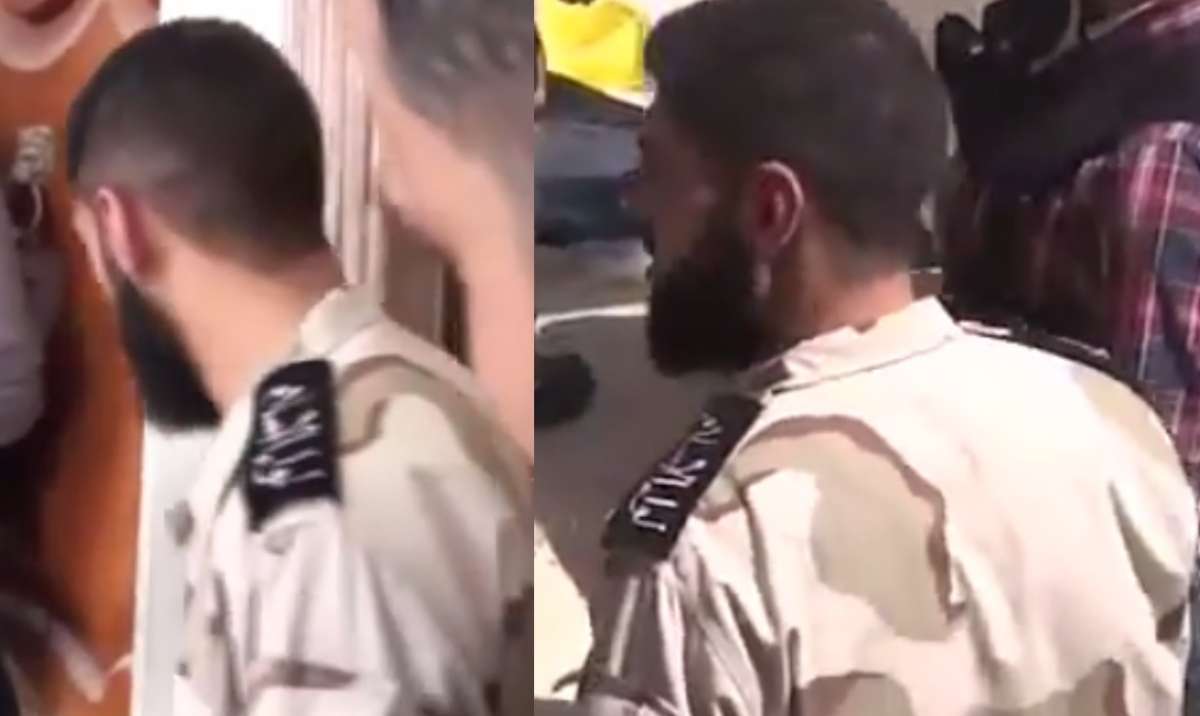


Next was finding the location of the building. There wasn’t too much to go on in the video, but thanks to the VDC and local co-ordination committee we had a number of locations they claimed were impact sites that could be used to direct our investigation. After examining several location, it became apparent this was the site visible in the video
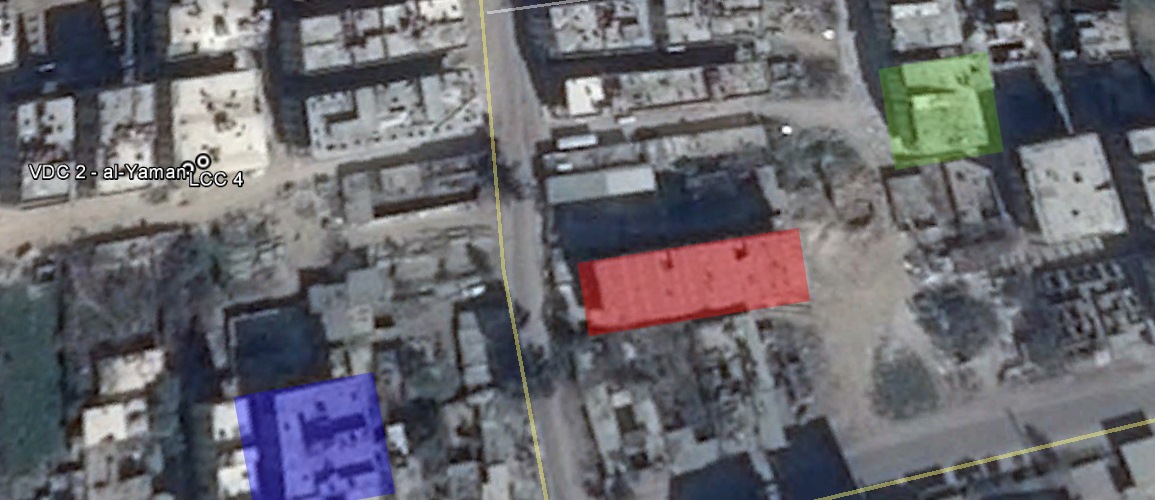
Marked in the above image are three structures that helped verify the video. In red we have a building site that’s visible when the inspectors leave the building

In green, a building with a distinct layout of windows visible in the satellite map imagery
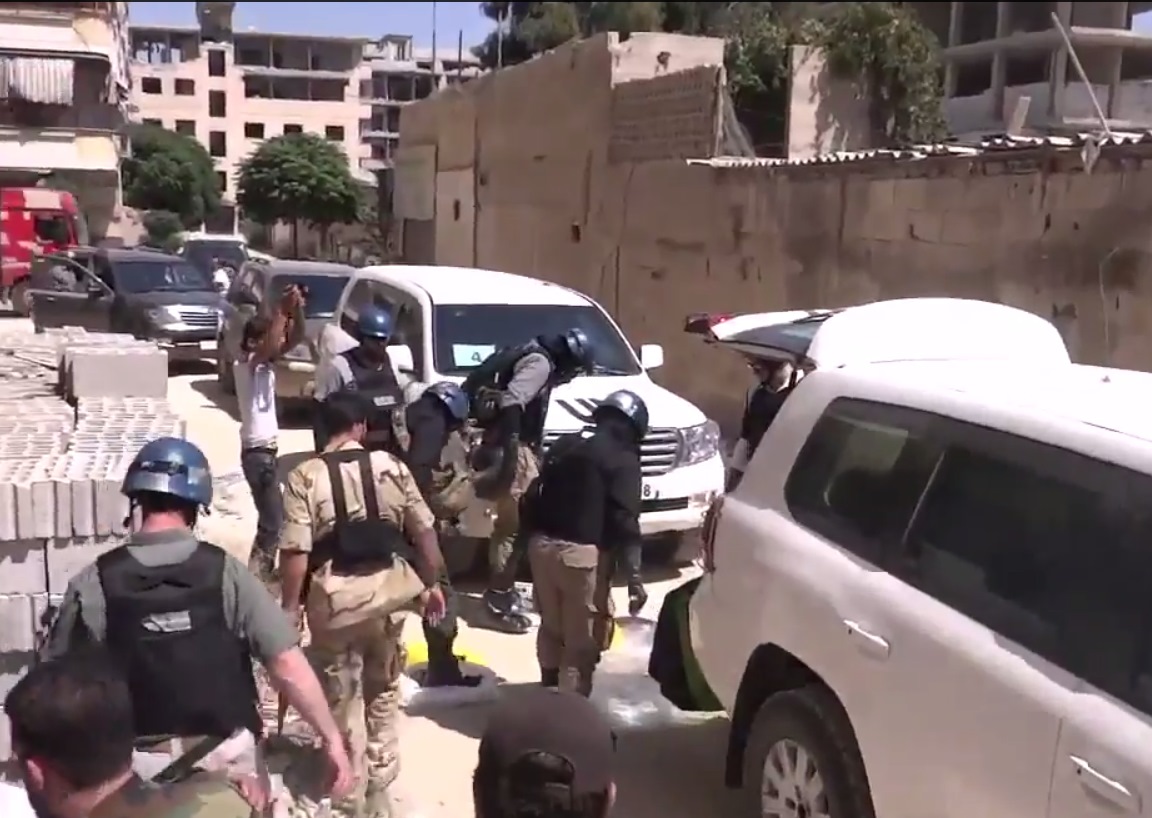
To the south, marked in blue, two apartment buildings
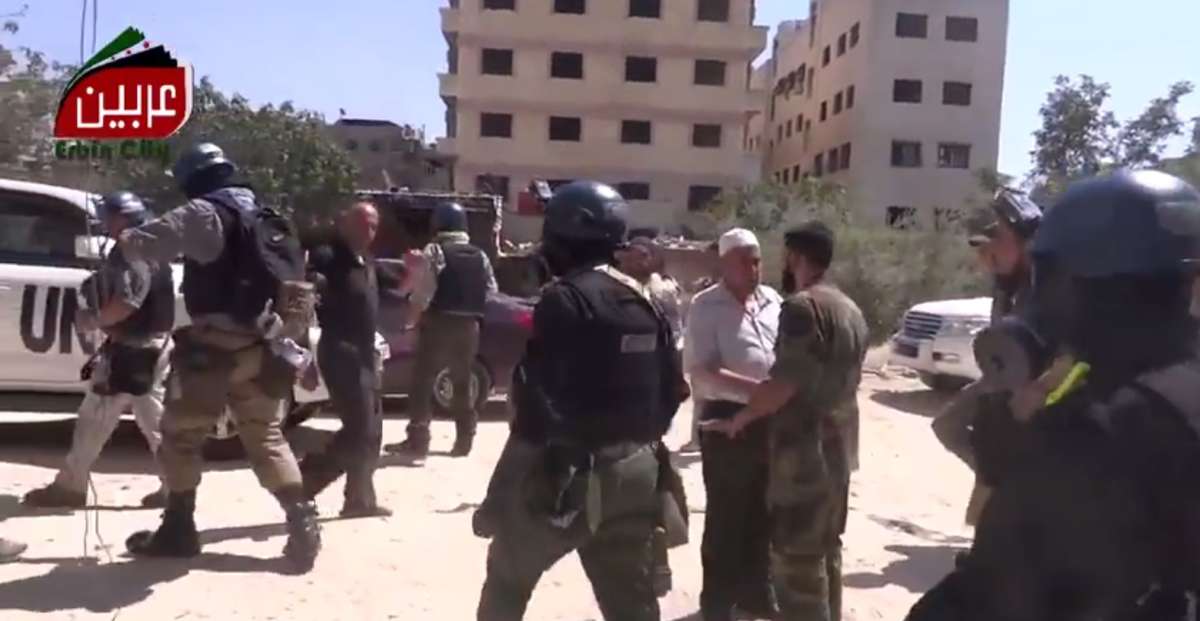
For these apartment buildings we had to go back to historical imagery, which gave us several views of the building

In the top left image it’s possible to count the windows, four rows on one, two rows on the other, just as it is in the video. Based on having established the location it appears the inspectors are coming out of the building to the north of the building marked by the VDC and LCC, so it seems likely this was the building hit by the attack.
This demonstrates how a variety of information can be used to establish important facts that might otherwise be impossible to establish. As I demonstrate in “Identifying Government Positions During The August 21st Sarin Attacks” this information then becomes part of a broader understanding of the attacks, giving us a clearer understanding of where the attacks could have originated from.
